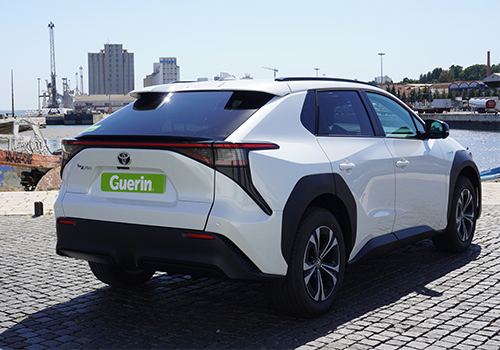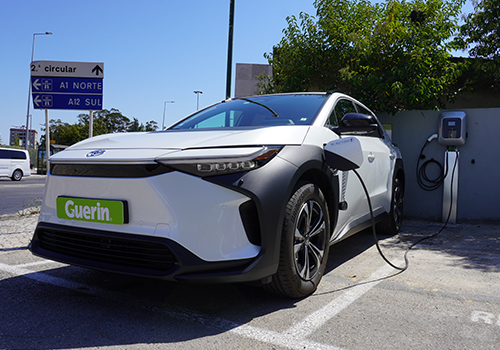Guerin® Blog
Driving Tips - Guerin
Myths about electric mobility. What is there to discover?
Share
Electric mobility is becoming increasingly popular all over the world. Innovation and environmental concerns are driving electric cars towards a more sustainable future. Despite this, there are still a number of questions surrounding their use. To debunk some of the best-known myths about electric cars, Guerin brings you an article that explains everything in detail. Ready to get started? Let's get started.


Electric mobility: 10 myths you need to know
1. Electric car batteries contribute to pollution
Let's start with one of the most popular myths about electric mobility. The truth is that the batteries in these environmentally friendly cars can be recycled. However, there are other possibilities that make these cars more environmentally friendly: the battery cells can be reused to store solar and wind energy or they can be dismantled to reuse the most valuable elements.
2. Electric cars don't have a good range
Many people are already opting for electric mobility. To meet the growing needs of drivers, options with greater autonomy are constantly appearing. With just one charge, an electric car can travel between 150 and 300 kilometers. Despite this reference, there are already some models with a range of 482 kilometers. Are you ready to go further with electric mobility?
And if electric cars already have a good range, there is still a way to improve it:
- Ensure the vehicle is properly maintained.
An important factor for the maximum range of an electric car is monitoring the tire pressure.
- The charging mode directly affects the battery.
It is recommended to keep the charge level between 20% and 80%, as well as opting for slow-charging sockets and smart chargers.
- Very high or very low temperatures have a negative impact on the battery. If the battery is exposed to one of these temperature variations, you should take some precautions, such as opting for smoother driving at controlled speeds.


3. An electric car doesn't run as fast as a combustion car
This is one of those points that is really just a myth about electric mobility. The truth is that an electric vehicle can run at the same speed or even faster than a gasoline or diesel car. This is because the maximum torque of electric cars is available from the start, so acceleration is obviously higher.
4. An electric car is not as safe as a combustion car
This myth is completely unfounded. An electric car is subject to the same safety tests as a combustion car. Therefore, the quality and safety standards required are exactly the same. Safety is guaranteed when mobility is electric.
5. There aren't many charging stations yet
To debunk this myth, all you have to do is take to the streets. Charging stations are not yet on every street corner, but there used to be more. Today, you can easily find electric vehicle charging stations in many service areas, hotels, restaurants, shopping centers and public parking lots.


6. An electric car doesn't respond as well as a diesel or gasoline car
When you drive an electric car, you'll be surprised. As soon as you press the accelerator, the transition between a standstill and acceleration is instantaneous. All in all, an electric car responds even better than a combustion car.
7. Electric cars are more dangerous because they are quiet
When driving above 20 km/h, the noise of the tires in contact with the road is easily heard by people. And now you're asking, what if you're driving below 20 km/h? No problem, electric vehicles are equipped with acoustic signals that warn pedestrians or cyclists of your presence. In electric mobility, everything is thought out in detail.
8. It's dangerous to use an electric car in rain or thunderstorms
This myth is quite common when applied to various types of electrical equipment. However, there is no risk whatsoever when mobility is electric. You can safely drive an electric car when it's raining or thundering. The same applies to charging the vehicle, there is no danger in doing so during a storm, whether in a garage or at a station on the public highway.
8. Electric cars take a long time to charge
The power of the car's external and internal chargers, the temperature and the level of charge are some of the factors that influence the battery's charging time. Despite this, the days when a car had to be left charging for a whole night in order to have enough battery power for a few kilometers are long gone. Nowadays, you can get the equivalent of 100 km of range in half an hour at a fast-charging station. If it's an ultra-fast station, it only takes 10 minutes.
10. Electric cars should have a battery of between 20% and 80%
To finish on a good note, we end with a case that isn't a myth, it's actually true. The ideal range to ensure the lowest risk of battery degradation is between 20% and 80%. The battery should not be allowed to fully discharge until it is charged again. This is the secret to making batteries last for years. Now that all the myths have been debunked, you can rent your electric car from Guerin and set off on your adventure without fear of running out of energy.
Ideal combination: explore without compromise
With Guerin, it's easy to be more environmentally friendly. Opt for electric mobility and go further on your adventure with Guerin's electric fleet. Whatever your destination, sustainability and safety should always be your priorities. To do this, you can add our complementary products to your booking. Choose the Driver and car occupant protection product to ensure that you and the other occupants are protected should anything happen. To enjoy the experience unhindered, we have the Additional Driver product available for you, so you don't always get behind the wheel.
Share

